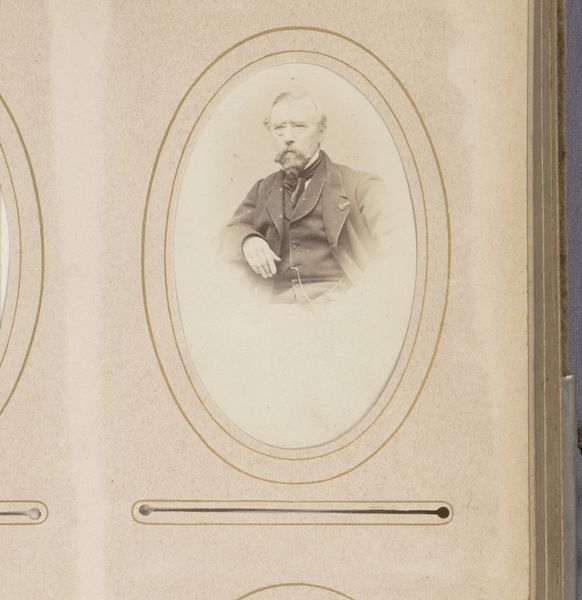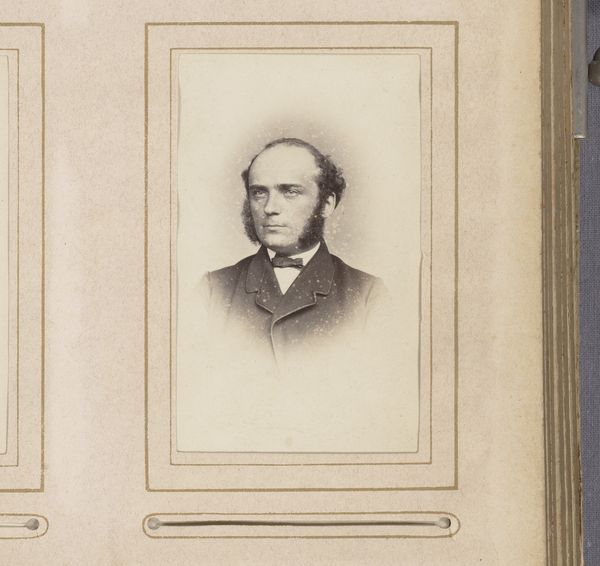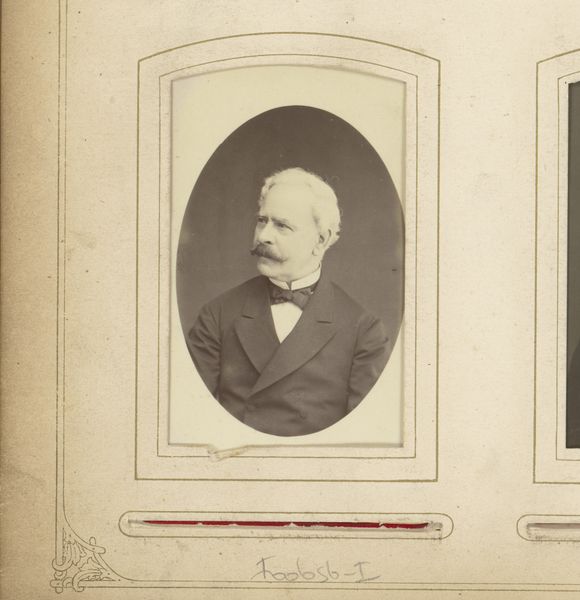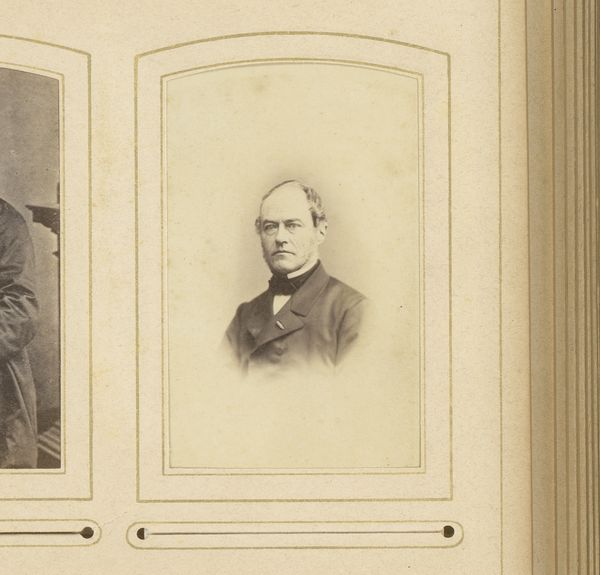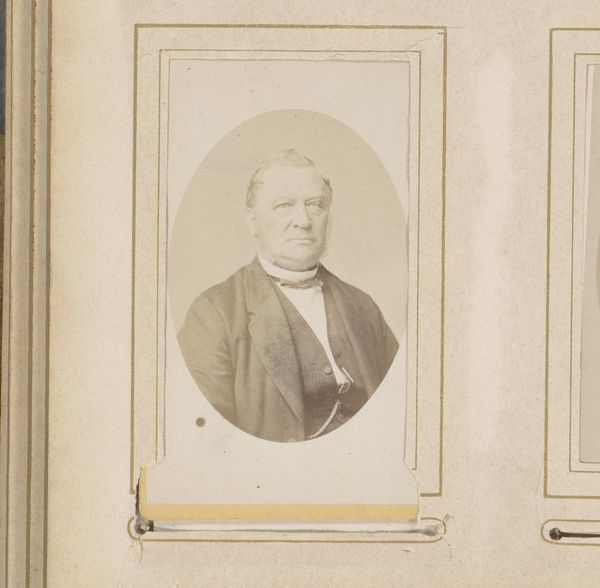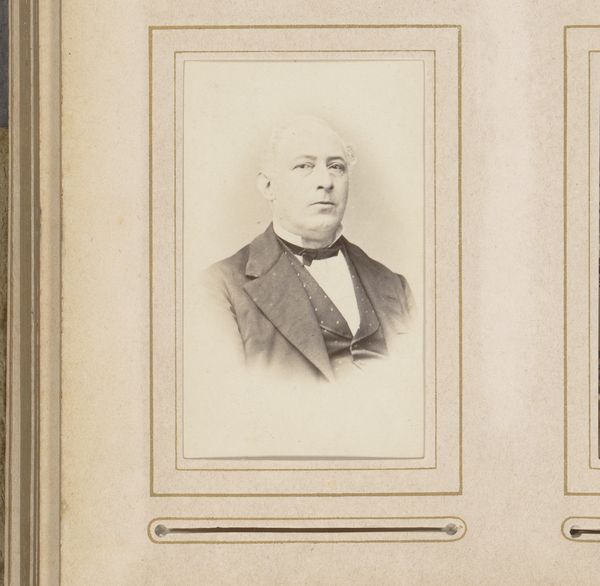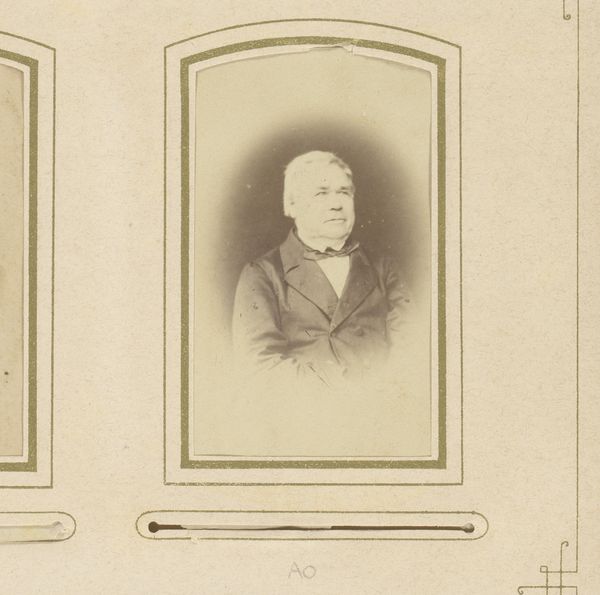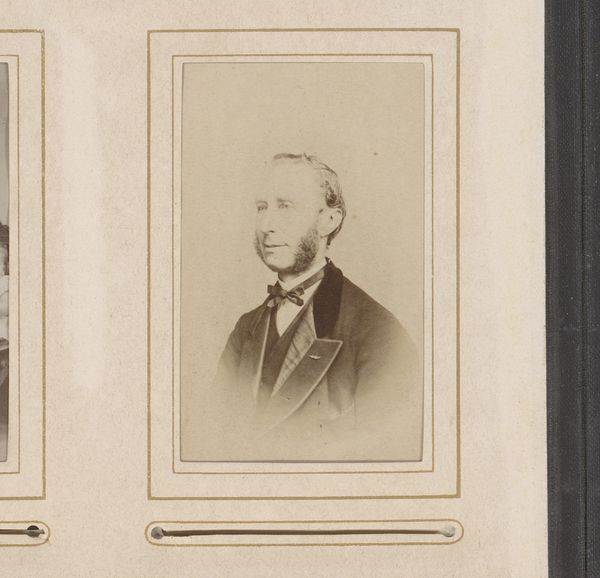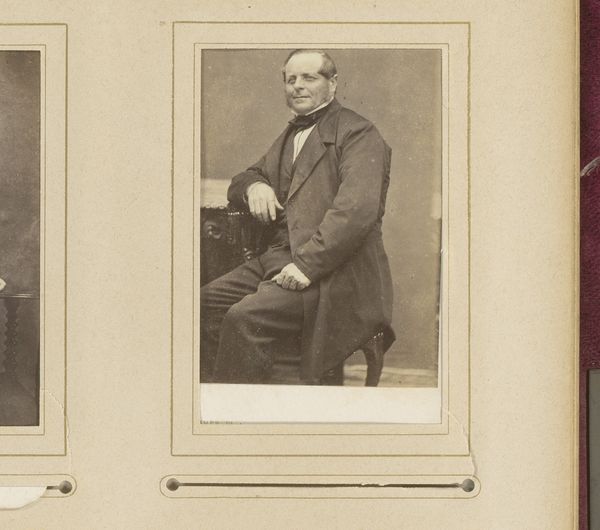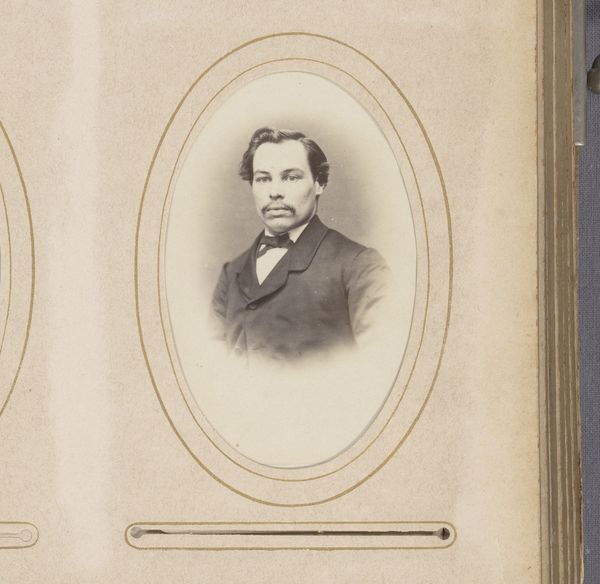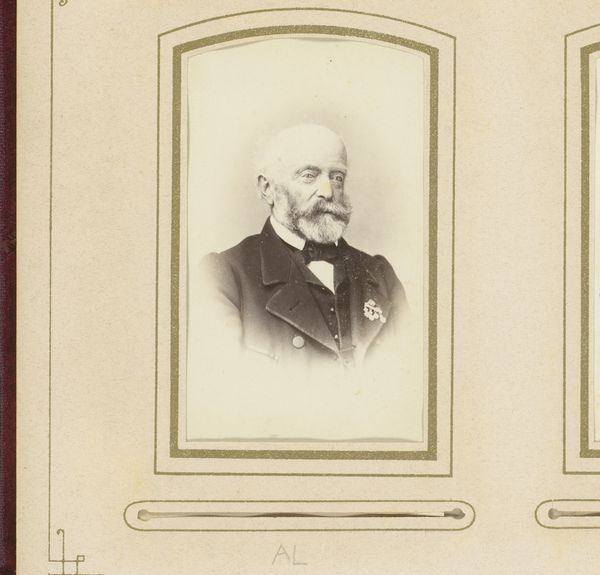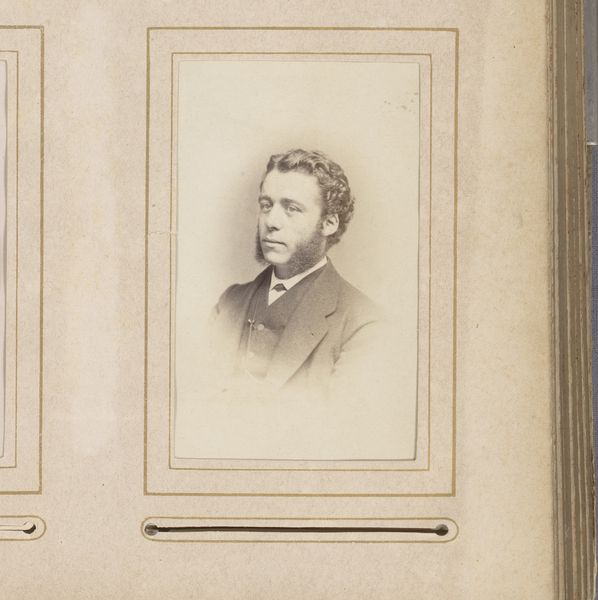
#
pencil drawn
#
aged paper
#
toned paper
#
light pencil work
#
pencil sketch
#
charcoal drawing
#
charcoal art
#
19th century
#
tonal art
#
watercolor
Dimensions: height 83 mm, width 50 mm
Copyright: Rijks Museum: Open Domain
Curator: What a find! Here at the Rijksmuseum, we have a compelling work titled "Portret van een man," dating from around 1861 to 1874 by Albert Greiner. What catches your eye first? Editor: It’s the ghostliness of him, actually. Like a Victorian apparition captured in pencil. The muted tones amplify the solemn atmosphere. It feels both intimate and distant, doesn't it? Like peeking into someone's faded memory. Curator: Indeed. Greiner captured more than just a likeness; he evoked an era. Pencil and watercolor on aged paper provide this very tonal quality. Note the sitter’s composed stance and dress. In that period, such presentation often symbolized status and societal roles. Editor: And the way he’s framed within the image, like a vignette from an old photo album! Makes you wonder about his story, doesn’t it? Was he a merchant, a scholar, a dreamer...? The cross-hatching around the face gives him this soft, thoughtful look that hints at complexities beneath the surface. Almost feels like the beginning of some unfinished story... Curator: Portraiture often served to immortalize and project specific qualities—authority, piety, intellect. His gaze, the formal attire—these elements work in tandem to present an idealized persona fitting for that age. However, in my view, the aging process of the materials makes this goal seem quite bittersweet. Editor: I like that contrast between ambition and fading memory. There's something poetic in how the "aged paper," as it's labelled, seems to mock the sitter's bid for permanence. Perhaps unintended by the artist, the piece becomes a contemplation on how even the most ambitious aspirations inevitably surrender to time. Curator: Precisely. This artwork serves as more than a depiction; it’s an exploration of societal norms, representation, and ultimately, the passage of time and what it does to cultural memory. Editor: You've given me a lot to ponder, like how a simple portrait can speak to whole eras and still feel deeply personal.
Comments
No comments
Be the first to comment and join the conversation on the ultimate creative platform.
